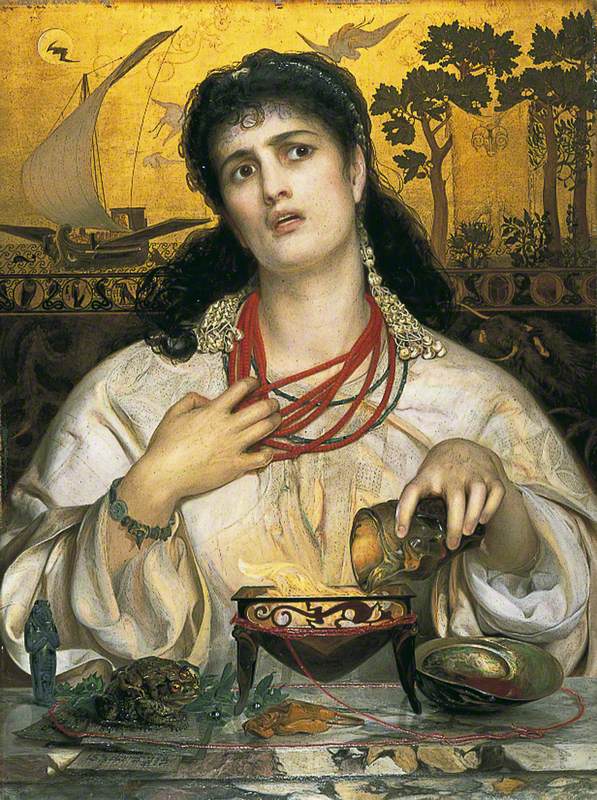20 Understanding the Myth of Medea

Medea is a tragedy written in 431 BCE by Greek playwright Euripides. The name, Medea (Μήδεια), means one who ponders, one who is cunning, and ruler. Before the plot of Medea begins, Medea is the sorceress who aided Jason and the Argonauts as he stole the Golden Fleece from her father, King Aeetes. To advance their escape, Medea murders her brother before Jason and Medea run away together and get married. Fast-forward years into their marriage, Jason has left Medea for the daughter of King Creon, Creusa. In revenge and lamentation, Medea takes the life of her and Jason’s two sons, before disappearing into her new life in Athens.
The story of Medea is full of anger, love, and power. The character of Medea holds a multitude of realities, a loving mother and a woman capable of filicide, neither completely a foreigner nor native to the land she is constantly othered and ostracized. Medea walks the line between power and oppression and therefore has been viewed throughout history through a queer lens, holding both masculine and feminine fury. Some scholars claim her rage is a symbol of female empowerment (although aggressive), while others denounce her villainous actions. She claims ownership over herself in ways not before seen in the Greek text, yet she acts from a place of heartbreak and oppression, forever chained to Jason’s power.
Where do we go from here?
Going forward, we can use Medea to understand how women in Classics are portrayed and interpreted, in both negative and positive lights. The questions we need to ask ourselves are about whether we are viewing these characters from our own modern biases, through the lens of old white men who have dominated this academic field, or from the view of the character’s themselves. One way of understanding our own biases is by investigating the costumes Medea has been portrayed in throughout the receptions of her plays. A way I have chosen to do so is through implementing Critical Fashion Practice.
What is Critical Fashion Practice?
Critical Fashion Practice (cfp) is “any piece, item, or work of fashion that announces a level of conceptual functionality that exceeds the capacity of simple clothing. What cfp shares with much contemporary art is the desire to place criticality at the epicenter of its concerns, that is, to challenge precepts about the world, jolt people from lethargic and lazily held views, destabilize ideologies, and to encourage ways of rethinking self and identity” (Critical Fashion Practice: From Westwood to Van Beirendonck,Adam Geczy and Vicki Karaminas)
Throughout Greek mythology and tragedy, Medea’s presence on stage has been portrayed with negative, othered connotations. By reimagining how she would be portrayed on stage, her characteristics can be understood in a new light. Medea “behaves without restraint or morality” and is both “terrifyingly free” as well as extremely caged within a world she did not ask for. The look on the next page incorporates references to her lineage from the sun god Helios, her nuptials to Jason, and her queered relationship with maternity.
